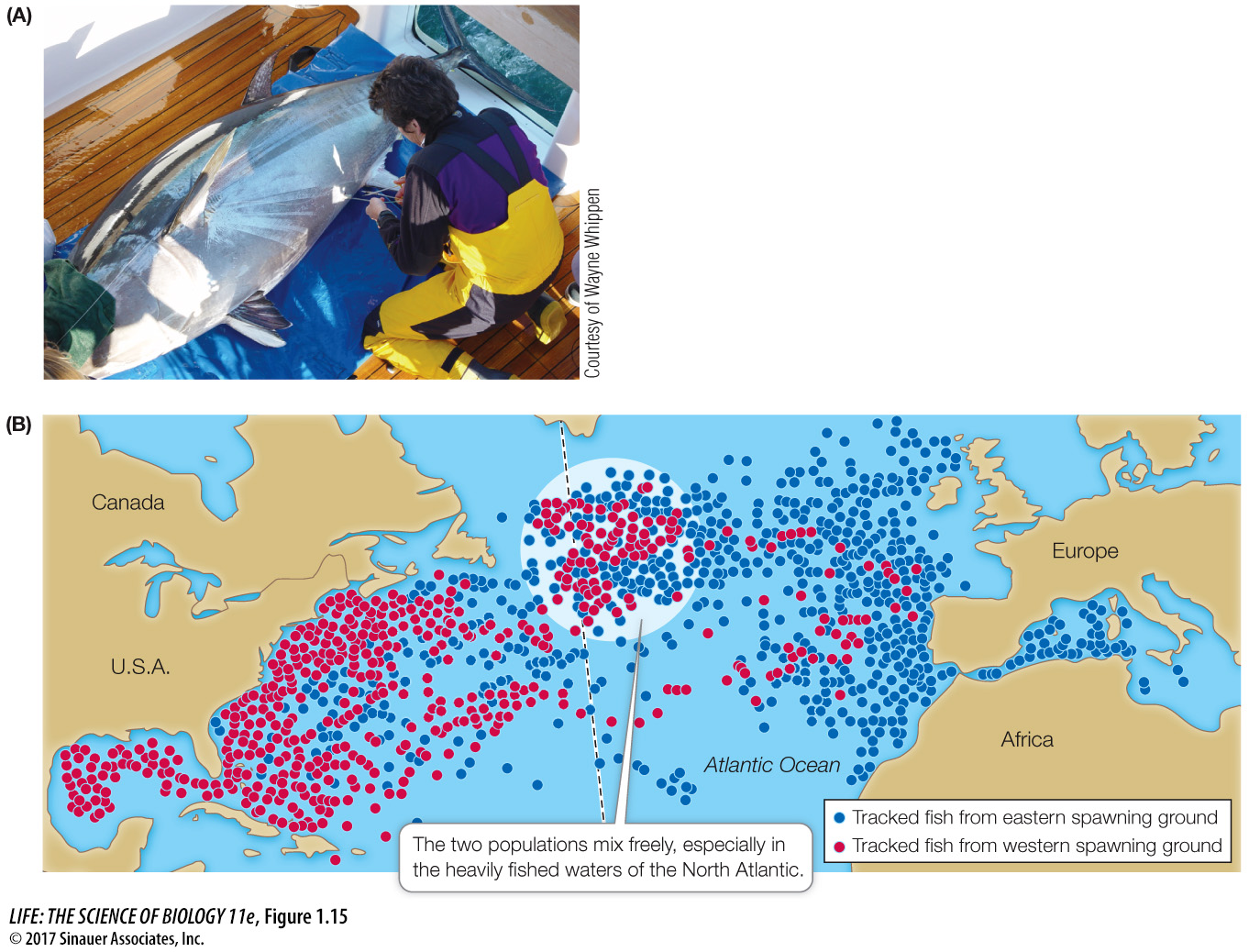Biology can inform public policy
Thanks to the deciphering of genomes and our newfound ability to manipulate them, vast new possibilities now exist for controlling human diseases and increasing agricultural productivity—
Biologists are increasingly called on to advise government agencies concerning the laws, rules, and regulations by which society deals with the increasing number of challenges that have a biological basis. As an example of the value of scientific knowledge for the assessment and formulation of public policy, consider a management problem. Scientists and fishermen have long known that Atlantic bluefin tuna (Thunnus thynnus) have a western breeding ground in the Gulf of Mexico and an eastern breeding ground in the Mediterranean Sea (Figure 1.15). Overfishing led to declining numbers of bluefin tuna, especially in the western-

Q: Based on Dr. Block’s data, does it seem likely that fishing quotas based on the mid-
The data reveal that the eastern-
Initially it was assumed by scientists, fishermen, and policy makers alike that the eastern and western populations had geographically separate feeding grounds as well as separate breeding grounds. Acting on this assumption, an international commission drew a line down the middle of the Atlantic Ocean and established strict fishing quotas on the western side of the line, with the intent of allowing the western population to recover. Modern tracking data, however, revealed that in fact the eastern and western bluefin populations mix freely on their feeding grounds across the entire North Atlantic—
Scientific knowledge can make significant contributions to the formulation of wise public policy, but economic and political factors frequently outweigh scientific recommendations. It is particularly lamentable when solid scientific evidence is discounted or ignored because it is inconvenient. An example is the rejection by many policy makers of strong evidence for and scientific consensus on global climate change.